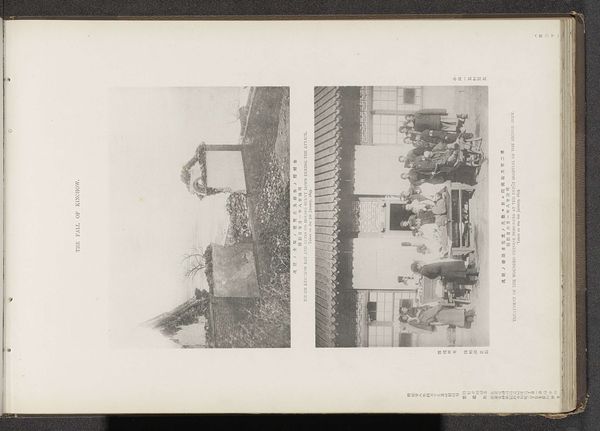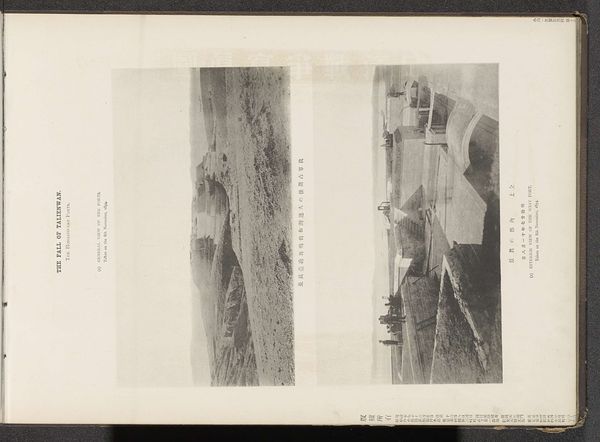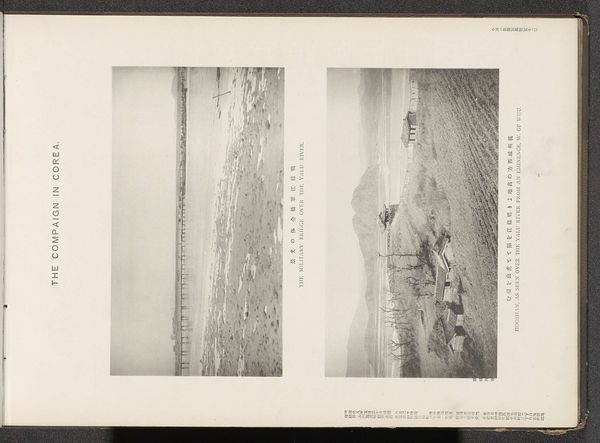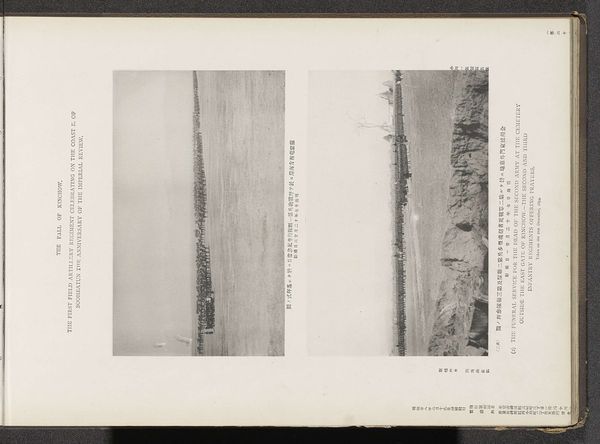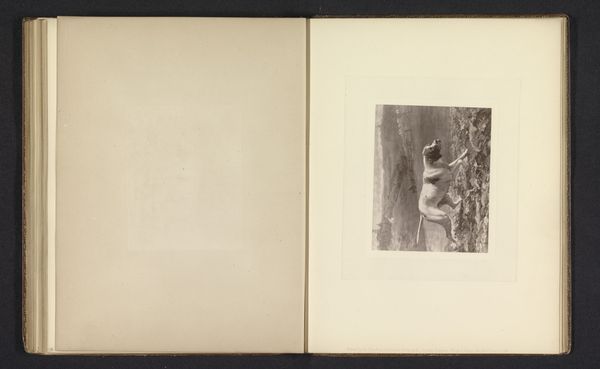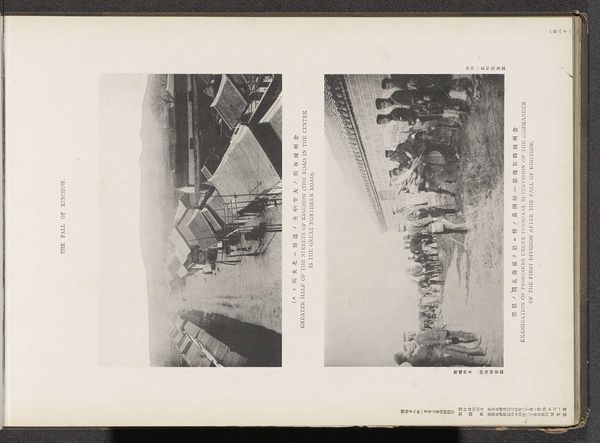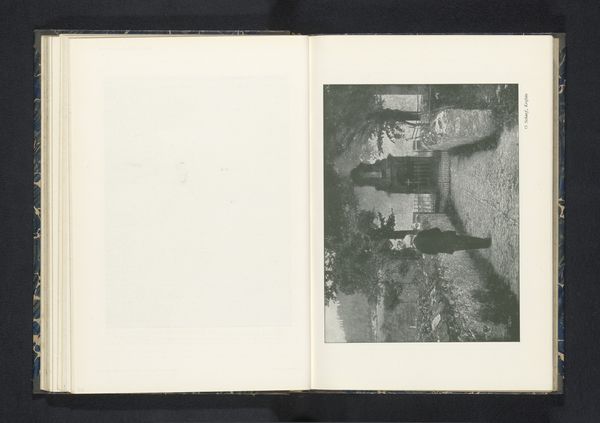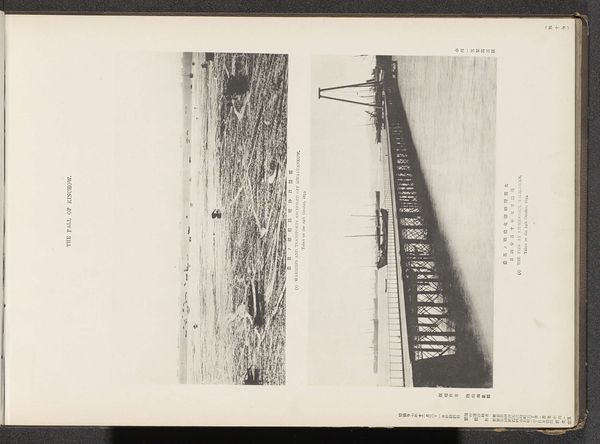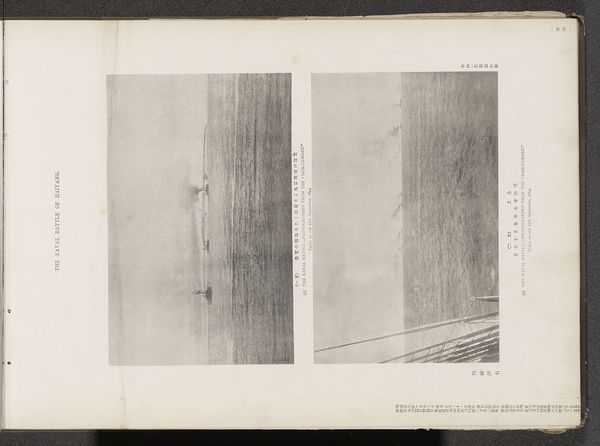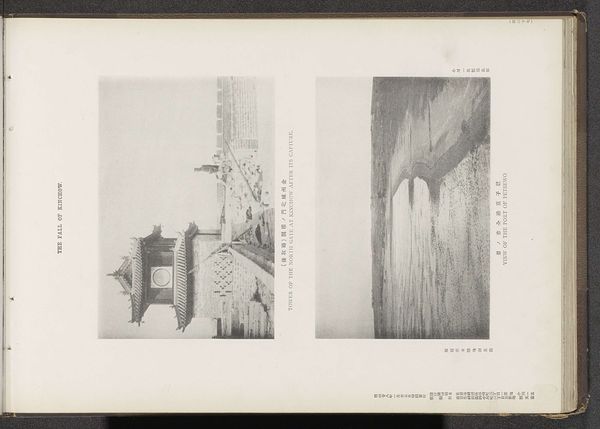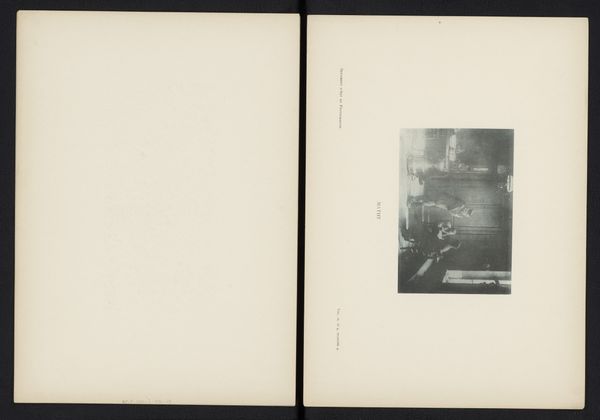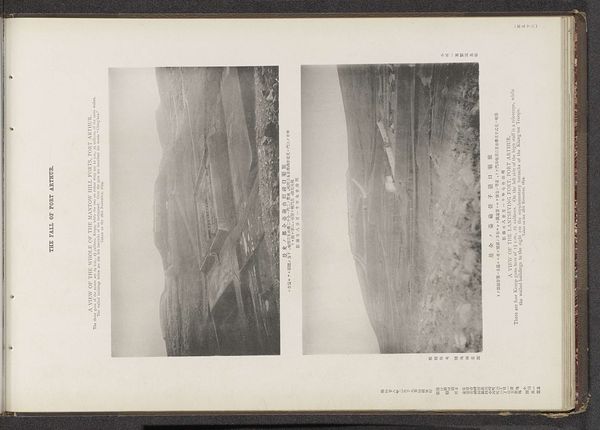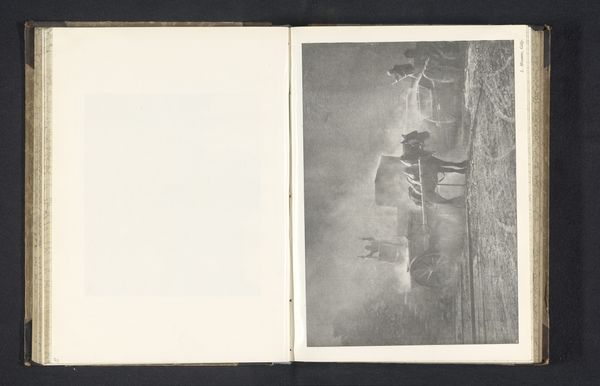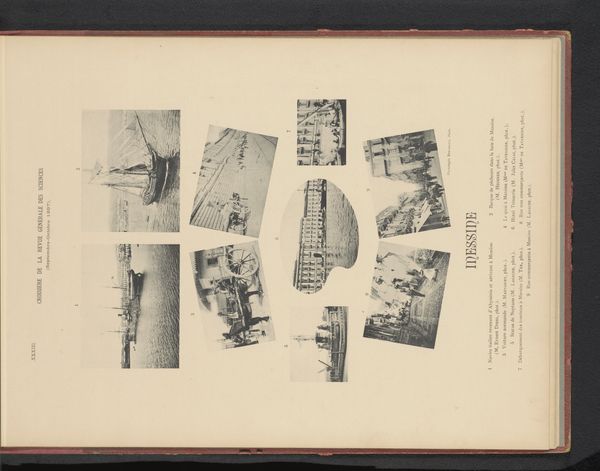
print, photography, gelatin-silver-print
# print
#
asian-art
#
landscape
#
photography
#
gelatin-silver-print
#
realism
Dimensions: height 426 mm, width 195 mm
Copyright: Rijks Museum: Open Domain
Editor: This fascinating gelatin silver print, "Japanse leger nabij Port Arthur," likely from 1894 and attributed to the Ordnance Survey Office, is quite striking. It depicts scenes related to the fall of Port Arthur. I am struck by the contrasting imagery; the stoicism of soldiers marching in formation beside the apparent ruins or fortification in the other photo. What’s the historical context surrounding these images? Curator: This print provides valuable insight into the socio-political dynamics of the time, specifically focusing on the First Sino-Japanese War. Images like these served specific purposes; how do you think documenting military actions and field hospitals reflects the role of photography during conflict? Editor: It's like they wanted to portray themselves in a certain way and, at the same time, reveal parts of war. Maybe it was used to shape public opinion or justify the war efforts back home? Curator: Exactly. And consider the "Ordnance Survey Office" as the creator. They weren't neutral observers; they were a government entity. How does knowing this affect your interpretation of the scene with soldiers? Is this objective reporting, or something else? Editor: It makes me wonder if they were promoting their version of reality through the lens, strategically framing the images to highlight their army’s capabilities, or downplay the devastation. Curator: Precisely! This photograph then isn’t just a record; it’s an act of constructing a specific historical narrative. Examining its circulation, audience, and intended impact allows us a fuller view. It brings questions to mind regarding image manipulation for national narratives at this early time in photography’s life. Editor: So true! Seeing how carefully planned photographs like these could reinforce a dominant political stance makes you critically look at everything differently. It sheds light on the manipulative aspect of imagery! Curator: Precisely. It encourages deeper inquiries into who controls imagery and their purposes. A print, when examined in depth, offers historical perspectives.
Comments
No comments
Be the first to comment and join the conversation on the ultimate creative platform.
